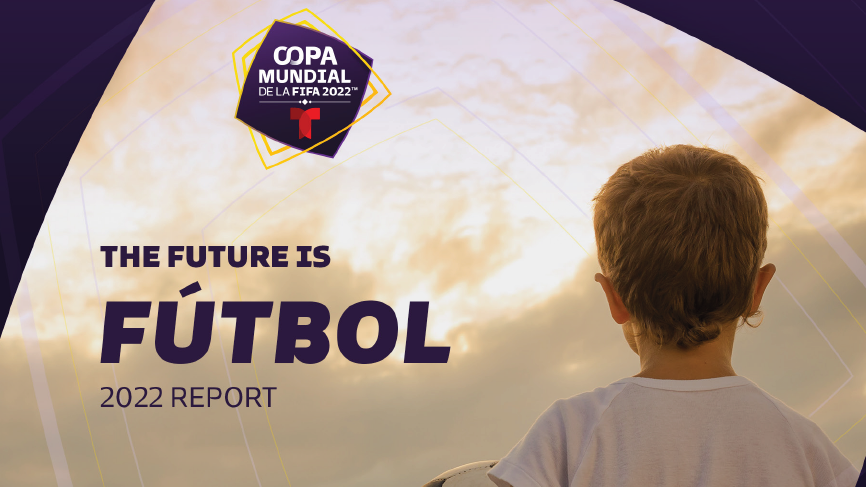Telemundo Study Emphasizes Growth of Fútbol, Intensity of Fans
World Cup viewing in Spanish more impactful than in English

With the FIFA World Cup about to kick off, NBCUniversal Telemundo Enterprises released a report that argues that the game is growing in the U.S. and that it is particularly engaging when watched in Spanish.
The report, The Future Is Fútbol, paints soccer as the fastest growing sport in the United States. This year’s World Cup in Qatar (set for November 20-December 18) — to be televised in Spanish by Telemundo — could give the sport a further boost ahead of 2026, when the U.S. will co-host the event.
Soccer has been regarded as the future of sport for decades. The Telemundo report presents data showing that future is getting closer.
High school soccer participation increased 32% from 2002 to 2019, more than basketball, football, baseball or ice hockey. The report described soccer as a more egalitarian sport, with girls playing almost as much as boys. Participation grew 31% for girls compared to 33% for boys.
Also: Telemundo Reprises Soccer Campaign Aimed at Youth Before World Cup
Hispanics are particularly fanatical about fútbol. Soccer is already the most popular team sport among 40% of Hispanic high-school students compared to 21% of all high-school students.
Among U.S. Latinos age 16 and up, 73% say they are soccer fans, with 22% self-identifying as super fans — three times more than non-Hispanics. Latinos rank soccer ahead of American football, basketball and baseball.
Broadcasting & Cable Newsletter
The smarter way to stay on top of broadcasting and cable industry. Sign up below
In the report, 53% of Latinos said they plan to watch the World Cup, as do 29% of non-Latinos.
As part of the study, Telemundo did neuroscience research in which half of the subjects watched a World Cup match in Spanish while the other half watched in English.
The study found that when Latinos watched a soccer match in Spanish, they subconsciously liked it more than when they watched it in English. Watching in Spanish generated 15% greater likability compared to watching in English. The increased appeal of the game led to an elevated desire to keep watching for longer, keeping viewers glued to their screens, according to the study.
“Watching the match in Spanish was like an emotional and entertaining roller coaster ride where key game moments in Spanish, on average, produced 37 points more emotional intensity compared to English, where the highs didn’t go as high, and lows didn’t go as low,” according to the report.
The positive effects of Spanish game commentary transferred to advertising. The identical ad played in Spanish had 19% higher likability and 49% greater emotional intensity vs. English because Spanish is filled with emotion and expression that people feel for both the game and the brand advertising involved, the report said.
“Fútbol is the sport of America’s future,“ Mónica Gil, chief administrative and marketing officer, NBCUniversal Telemundo Enterprises, said. ”Soccer is growing in the U.S. and Hispanics are clearly leading the way, Every four years, the FIFA World Cup brings Latinos and non-Latinos together with a spirit and intensity that no other sporting event in the world can match. There is no more authentic way to experience the World Cup than in Spanish. For companies and brands seeking real cultural connection and a space to engage Latinos, soccer and the FIFA World Cup are the place to be, this fall and for years to come.” ■
Jon has been business editor of Broadcasting+Cable since 2010. He focuses on revenue-generating activities, including advertising and distribution, as well as executive intrigue and merger and acquisition activity. Just about any story is fair game, if a dollar sign can make its way into the article. Before B+C, Jon covered the industry for TVWeek, Cable World, Electronic Media, Advertising Age and The New York Post. A native New Yorker, Jon is hiding in plain sight in the suburbs of Chicago.

